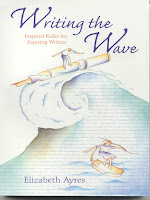by Deborah Lyn Stanley
We write blog posts, fiction, memoir and non-fiction pieces; But at the core, we are telling stories full of descriptive prose, narration, action and challenges.
Last time we talked about analyzing our writing. It’s healthy to analyze our plan, our goals, and to decide what’s working and what’s not. What if we have forgotten the reader here and there? Let’s backtrack to discover the root cause. Does the delivery have rhythm and flow? Areas of too much information? Is the language active with lively nouns and verbs? When reviewing these questions as we read our plan and the draft, some needed improvements may standout.
So, what is the best way to start an article, blog post, short story, or book? We need to focus on the heart of the article or story. Does it open with a promise of what is coming, a connection to the deeper story, an underlying cause? It’s probably a good idea to write that first chapter or opening sentence, remembering this is a draft, and we may need to change or rewrite the opening at some point. Once we are further along in writing the piece, we’ll likely know more thoroughly what we want to say—when we know the characters and flow of the story better. And how it should end.
Story structure is also called narrative structure, the flow of events as beginning, middle and end. Being acquainted with various structures can help and resolve the reader’s questions. Helping to connect the events of the piece with the significant points.
Most commonly, though, we talk about narrative in terms of Point of View (POV) such as:
1) First Person Point of View—The “I” telling.
First Person narration is the most personal. The reader feels they are hearing the story directly, as if the character is actually talking to them—like having a conversation with a friend. The reader may know a character by the way she/he describes her/his world. And thus gives the character voice.
2) Third Person Point of View—The “he or she” telling.
There are two types of third person POV: limited and omniscient.
It’s not speaking directly to the reader, but consider these options:
Limited viewpoint is specific to a character’s perspective, thoughts and experiences. But you can’t show what that character doesn’t experience or have knowledge about.
Omniscient viewpoint is not restrictive. The perspective can float from place to place, from one character’s thoughts to another character’s thoughts.
3) Multiple Points of View—Switching characters from one point of view to another at the end of a scene, section or chapter. In this way, you can show a situation from different perspectives, show your main character from the inside and out, or even when he/she wasn’t there. It allows you to choose to tell a scene along the most interesting path.
Keep Your Writing Practice
Deborah Lyn Stanley is an author of Creative Non-Fiction. She writes articles, essays and stories. She is passionate about caring for the mentally impaired through creative arts.
Visit her My Writer’s Life website at: https://deborahlynwriter.com/
Visit her caregiver’s website: https://deborahlyncaregiver.com/
Mom & Me: A Story of Dementia and the Power of God’s Love is available: on Amazon
& https://books2read.com/b/valuestories
Share on LinkedIn
https://www.linkedin.com/
And more via the icon bar below:






































